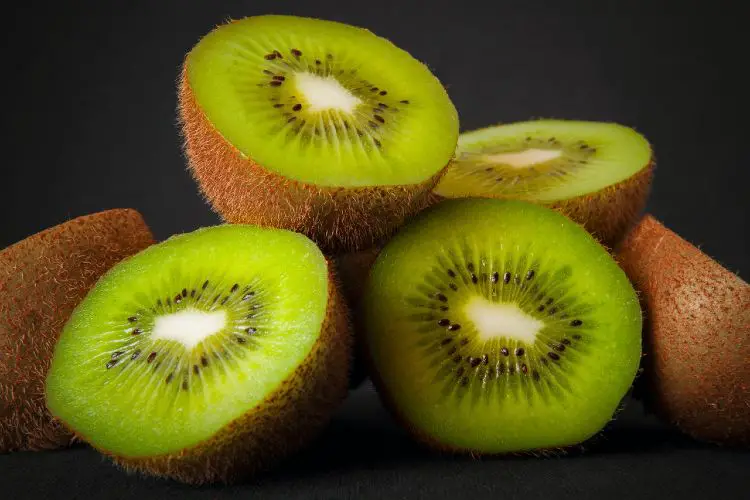The Raw Milk Debate and The Goodwood Estate Way
It’s 1980. I am eight years old and my mother hands me a battered old milk pail with a metal handle to fetch milk from the farm. I skip along dodging cowpats in the lane, with the pail knocking the tops of my rubber Wellington boots, singing Alouette, gentile Alouette. The sun is shining.
At the farm the cows wait patiently in line. They are in the same order each day with the scary looking one with large horns and the bell always at the front. I examine each one. It seems to me they contemplate life whilst the farmer sloshes steriliser on their soft pink udders and places the pumps on their teats. There is a rhythm to it all, the unmistakable milking parlor smell both comforting and familiar.
I idle my way to where the milk is being held in a huge steel vat, chilled with an arm that moves continuously and I’m poured a ladle of creamy tasting sweet milk to drink. It’s my treat before my can is filled. I walk home, still knocking the can on the top of my boots and spilling the top inch or so of milk, splashing along the lane with a milk moustache, singing.
Thirty years later and farming life has changed beyond recognition. It has now been over two decades since I have drunk real milk. As I began to research the industry, for an article I was commissioned to write for the Goodwood Magazine in The Daily Telegraph, I felt a sense of loss. I realise that I am now very cautious about drinking a product I was raised on.
After over two decades of continued and sustained attack on the consumption of raw milk, it is hardly surprising that as a mother to three young children I am nervous. Years ago unpasteurised milk was associated with the spread of Tuberculosis in humans and a possible carrier of food poisoning bugs such as, campylobacter, salmonella and E.coli. Dire health warnings accompanied its sale: now the only way you can buy it is directly from the farmer.
I start out my research by watching as people at Borough Market are buying their unpasteurised milk directly from the farmers’ stalls. New mothers, young men, elderly couples and tourists are laughing and relaxed as they buy and drink unpasteurised milk in the sunshine. Are they food rebels? Haven’t they read the mandatory warning label? Do they know and do they care? Is it really risky? Am I being a neurotic parent? Or are they simply drinking the most delicious drink in the world, just as nature intended? Should I allay my fears and drink the milk of my childhood? The people here can’t seem to get enough.
I ask one of the women drinking raw milk if she is at all concerned about its health implications? She laughs. “The health benefits for me far outweigh the risks,” she says, “and you can get far more ill from bad prawns. I wouldn’t drink anything else”. Several more people join the conversation, and they are almost evangelical in their love of raw milk. The conversation is passionate and there is serious conviction and depth of knowledge from them all. Nobody is even slightly bothered about the warning labels and one lady argues that farmers who pasteurize their milk do not have to be quite so careful about hygiene whereas those who produce raw milk are fastidious.
The warning labels are created to inform people, by law, of the risk of infection from unpasteurised milk. The pasteurisation process was first was created by the French microbiologist Louis Pasteur after whom it was named in April 1862. It involves heating raw milk to 72 degrees Celsius to destroy any bacteria, yeast or fungi that might be present. Commercially this process is fundamentally important because it extends the shelf life of milk considerably. Whilst the process kills anything that might contaminate milk, however, the heat treatment kills all the “good bacteria”, such as Lactobacillus acidophilus, so completely negates the gut-protective properties of whole milk.
Raw milk consumption has been shown to positively influence the immune system’s resistance to developing asthma, hay fever, and atopic sensitization (although the mechanism for this is not entirely understood. Ironically there are some schools of thought which believe the homogenisation process breaks down the fat globules in such a way that they may well be the very cause of large increases in milk allergies that we see in today’s younger generation.
I called Xanthe Clay, food journalist for the Telegraph, to try and understand more why people feel so strongly about raw milk. It seems that it is not just the health benefits that make people so passionate about raw milk “It is simply lovely,” she said “and it is not until you taste it that you realise that the pasteurised milk we are used to has a cooked taste to it. Raw milk tastes pure and clean but you really do have to make sure it is from a reputable source.”
I Tweet to find out what other mothers, cooks and writers think, and the response is enthusiastic. Yet despite a resurgence in interest in raw milk and sales (where available) increasing, the number of farms in England and Wales (it is banned in Scotland) has dropped alarmingly from 570 to just 100 in the past ten years. As I am reading the governmental notes from online it seems that one of the key reasons raw milk has not been banned in the UK is the fear of driving it underground, creating a secret network of “pop-up” dairy farm stalls in markets and fairs, such is the determination of the consumers who love it to drive black market sales.
Last year I visited the herd at the Welbeck Estate in Nottinghamshire that supplies the milk to make the award winning unpasteurised Stichelton blue cheese. Like the farm at Goodwood Estate in Sussex, home to the Dukes of Richmond for over three centuries, the herd is closed to protect the milk they produce. It was there that I first learned that by closing a herd, ensuring no cows are brought in from other herds, the farm managers can control the cows’ health in a much more rigorous way.
I met up with Farm General Manager Tim Hassel at the Goodwood Dairy and he told me that the small size of the herd is key to the quality of the raw milk produced there.
“With just 180 Short Horn cows we are a small producer and we keep a really close eye on our herd. We have rigorous weekly checks and we’ve never ever had any abnormalities. The cows graze in the meadow grass, typical of the chalky soil in Sussex, rich in red and white clover, birds-foot-trefoil, hoary plantain and wild basil. This is the ideal diet for a dairy herd, and those flavours all come out in the raw milk.”
Goodwood Farm is the largest lowland organic farm in the UK and the first 100% organically-fed dairy in the country. It achieved full organic status in 2004, and the present Duchess of Richmond was one of the Soil Association’s earliest members. She also ran her kitchen garden on organic principles and her son, the Earl of March, is now also committed to organic farming.
At Goodwood I learned that raw milk has formed part of the human diet for the last 7,000 years, Because cows are ruminants they have a complex digestive system designed to break down cellulose, a type of structural sugar indigestible to humans. Raw milk from grass-fed cows is rich in naturally produced antimicrobials in solution as well as a beneficial fatty acid known as CLA, or Conjugated Linoleic Acid, which is thought by scientists to help reduce body fat and fight cancer.
Goodwood’s Home Farm is situated close to Goodwood House, north of Chichester and its coastal plain. The soil is mainly free draining chalk which is ideal for spring, malting barley and for the grazing of sheep and beef. The soil on the coastal plain is silty gravel and this is best suited to the grass which is grazed by the dairy herd.
The farm provides the animals with organically grown cereals and forages which are fed during the winter months. Malting barley is also grown and is used by a local, artisan brewer to produce Goodwood’s own Organic Lager and Ale.
Wheat, barley, oats, beans and vetches are grown in rotation, a traditional system which helps to prevent disease and maximise the soil’s natural nutrients. Farmyard manures, slurry from pigs add nitrogen and organic matter to add nutrients and suppress weeds. Red and white clovers are sown to provide forage and grazing whilst fixing atmospheric nitrogen.
As my children and I sat outside the Goodwood Farm Shop we tasted their three organic, homemade cheeses made with pasteurised Goodwood milk and I also poured myself a glass of raw milk. I closed my eyes and sipped slowly. The milk was sweet, cool, clean and buttery. In my head I felt like I was eight again. This is how milk used to taste, I told my children as I poured them a glass each. They all agreed with Xanthe’s verdict. Raw milk is delicious and it seems to me that the integrity and expertise of the source and the farmer provide the answers to all my raw milk questions and concerns.
Further Information
The Goodwood Estate: www.goodwood.co.uk

